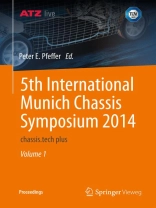The key drivers of innovation in the field of chassis systems are measures to improve vehicle dynamics and driving safety, efforts to reduce fuel consumption, and intelligent development methods. In addition, chassis development is focusing on enhancing ride comfort while also improving NVH characteristics. At the same time, modularization strategies, concepts for the electrification of the powertrain, and steps towards greater system connectivity are making increasingly complex demands on the chassis and its development. Developers are being called upon to respond to these challenges with a variety of solutions.
Table des matières
The chassis of the future.- Trends in chassis development.- New chassis systems.- Vehicle dynamics tuning.- Chassis functions.- Driving simulators and development methods.- Ride comfort.- Vehicle stability.- Innovative steering systems and redundancy.- Electronics and testing.- The future of the braking system.- Development methods.- New tire developments and virtual methods.- Tire pressure monitoring and materials.- Lightweight design and systems.- Human-machine interface.- Driver assistance and chassis development.- Testing and modules of braking systems.- Traction.
A propos de l’auteur
ATZ live stands for top quality and a high level of specialist information and is part of the worldwide specialist scientific publishing group Springer Science + Business Media.
TÜV SÜD is an international leading technical service organisation catering to the Industry, Mobility and Certification Segment. The experts and technology consultants are dedicated partners in their clients‘ processes, offering comprehensive industry expertise throughout the entire value chain.












